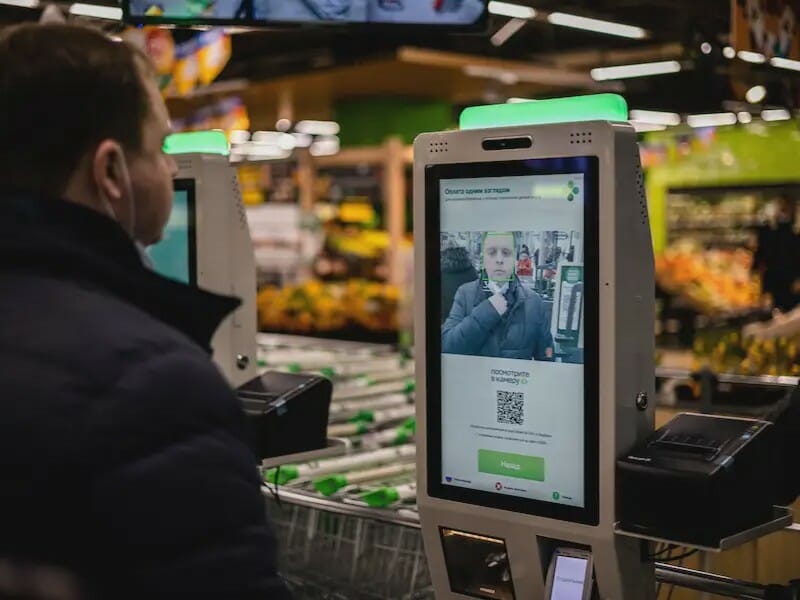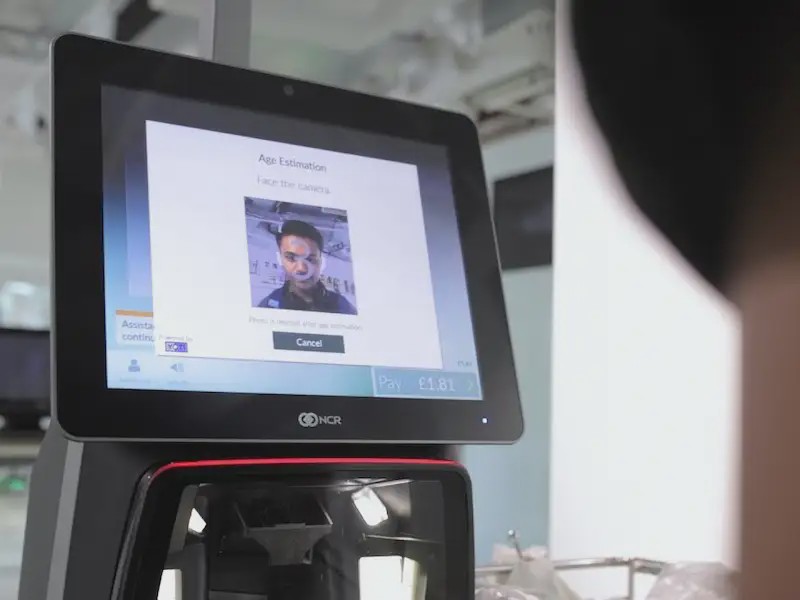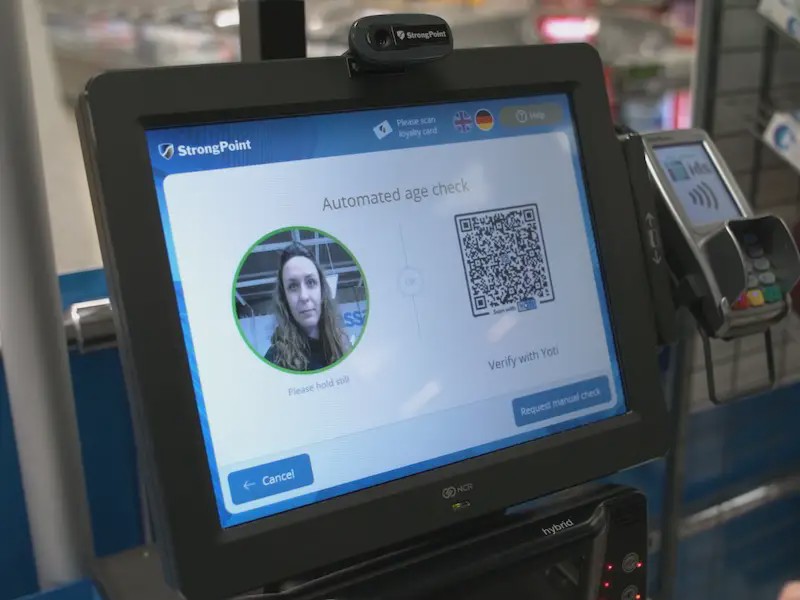Facial Recognition In Retail — Digital Innovation — Tech Journal
The covid-19 implications coupled with customer expectations have raised the need to go digital. As a result, retail stores have become experience centers than just store outlets in the digital transformation era. To provide an engaging customer experience and boost the marketing strategy, facial recognition has brought a whole new level of advancement in AI technologies.
The Allied Market Research Report states that the “facial recognition market will reach $16.74 billion by 2030.”
And don’t you find it fascinating if shoppers pay the bill at check-out by just representing a face, not any card or wallet? Facial recognition allows retailers to analyze shoppers’ moods and preferences based on their past purchases. Want To keep pace with digital transformation, then it’s the right time to rethink technology adoption? Let’s dig into this blog and learn how facial recognition helps retail boost sales like never before.
How Does Facial Recognition Dataset Helps Retail Industry?

From attracting customers to boosting revenue, in-store retail faces a more significant challenge. Something all customers are looking for is a convenient shopping experience. And in order to accomplish the same, retail stores must have access to datasets that they can’t get from the basic information of customer accounts. Facial recognition is the missing link between retail and greater customer experience. Leveraging facial recognition enables the retail industry to open new avenues in digital transformation.
Let’s look into how facial recognition helps the retail industry impact customer experience.
1. Self-Checkout With Facial Recognition
American express global customer support study stated that “Around 30% of customers said they consider switching companies after a single instance of poor service. Unfortunately, multiple payment methods such as cash, cards, and digital wallet require multiple POS terminal setups and higher manual intervention. At this juncture, facial recognition services are a convenient and faster solution to eliminate the limitations.
Facial recognition services enable shoppers in the retail industry to quickly pay for their shopping by presenting their faces on tablet-like devices and kiosks. Facial recognition fast-tracks the payment checkout in a three-step process-
- Scan the face on the digital tablet or at kiosks after verifying the purchase item list
- Identify the looks from the user database by using AI and Machine Learning (ML)
- Authentication of the face and generating payment and user details to approve
2. Provide Tailored Customer Assistance In-Store
As per a customer survey, 91% of unhappy customers who are non-complainers simply leave. Facial recognition enables the retail industry to obtain far more information than the basic one. For instance, facial recognition can record users’ emotional qualities like how long they explored a specific product or how long a user explored the particular shop in their retail store. Using sentimental analysis can also track whether the user is pleased, dissatisfied, or confused and determine their satisfaction during checkout. This deep learning mechanism helps retailers employ the data to improve store displays and promotions and identify flaws that disappoint users.
3. Personalized Customer Service

To offer a personalized customer experience, you must have the data to identify shoppers based on their demographics and choices. Facial recognition plays a crucial role in identifying shoppers’ information such as gender, age, location, etc. With Machine Learning (ML) capabilities, facial recognition enables retailers to offer various digital recommendations based on past purchases. That’s how retailers can easily send push notifications directly to customers with their preferred choices.
4. Theft And Shoplifting Prevention
Using facial recognition is an excellent way for the retail industry to discover shoplifters from the stores in real-time. It identifies the previous offender and matches it with the database to notify the security team. Facial recognition dataset-
- Capture the facial image and extract features
- Extract features, convert image into grayscale, and crop face
- Convert the photo into a template and search in the database
- Compare the template database and notify fraud
5. Workforce Productivity
Having facial recognition in retail is a helping hand to employees as well. With facial recognition services, the retail industry keeps a track record of employee working hours, provides security and data access during working and checkout hours, and restricts unauthenticated access in the store. In addition, facial recognition enables employees to monitor real-time interactions and record conversations to improve the business process.
How Does Data Collection Enterprise Help Build Facial Recognition Model?

Data collection is the foundation stone for building a facial recognition model. Since facial biometrics is different from person to person, the facial recognition dataset must be adaptable to reading, identifying, and recognizing every face. And to make this data collection enterprise can be a great help. Data collection enterprises help the retail industry by collecting photos of several people from various parts of the world and assisting in creating a heterogeneous database of their own. With a database in hand, the retail industry can identify and authenticate faces amidst a large crowd present in front of them.
Final Thoughts
Shopping with augmented reality to provide virtual chats, the retail industry has been adaptable to innovative technologies in the past. And facial recognition is a revolutionary step in maintaining an edge over competitors and creating a benchmark in their business process. With an extensive collection of facial recognition datasets and optimized AI models, retailers can revolutionize and standardize customer self-service throughout the organization.
Author Bio
Vatsal Ghiya is a serial entrepreneur with more than 20 years of experience in healthcare AI software and services. He is the CEO and co-founder of Shaip, which enables the on-demand scaling of our platform, processes, and people for companies with the most demanding machine learning and artificial intelligence initiatives.

Originally published at https://techjournal.org on April 1, 2022.
![]()
Facial Recognition In Retail — Digital Innovation — Tech Journal was originally published in Chatbots Life on Medium, where people are continuing the conversation by highlighting and responding to this story.
- Coinsmart. Europe’s Best Bitcoin and Crypto Exchange.
- Platoblockchain. Web3 Metaverse Intelligence. Knowledge Amplified. FREE ACCESS.
- CryptoHawk. Altcoin Radar. Free Trial.
- Source: https://chatbotslife.com/facial-recognition-in-retail-digital-innovation-tech-journal-e72196cc1633?source=rss—-a49517e4c30b—4
- "
- 20 years
- 2022
- access
- addition
- Adoption
- AI
- All
- analysis
- April
- artificial
- artificial intelligence
- augmented
- Augmented Reality
- become
- Benchmark
- Bill
- Billion
- Blog
- build
- Building
- business
- capabilities
- Cards
- Cash
- ceo
- challenge
- Checkout
- choices
- Co-founder
- Collecting
- collection
- Companies
- competitors
- Convenient
- Conversation
- conversations
- coupled
- COVID-19
- Creating
- crop
- crucial
- customer experience
- Customer Support
- Customers
- data
- data access
- Database
- Demographics
- Devices
- different
- digital
- Digital Transformation
- digital wallet
- directly
- displays
- easily
- Edge
- eliminate
- employees
- enable
- Enterprise
- Entrepreneur
- excellent
- expectations
- experience
- Face
- faces
- fast-tracks
- faster
- Features
- flaws
- Foundation
- Gender
- generating
- Global
- Grayscale
- great
- greater
- healthcare
- help
- helping
- helps
- higher
- How
- HTTPS
- identify
- identifying
- image
- Impact
- improve
- industry
- information
- Innovation
- Intelligence
- IT
- journal
- large
- LEARN
- learning
- Leave
- Level
- leveraging
- LINK
- location
- Long
- looking
- machine
- machine learning
- manual
- Market
- market research
- Marketing
- medium
- ML
- model
- models
- Monitor
- more
- most
- multiple
- offer
- open
- optimized
- order
- organization
- own
- Pay
- payment
- People
- person
- platform
- poor
- PoS
- present
- process
- processes
- Product
- provide
- provides
- purchase
- purchases
- quickly
- reach
- Reading
- real-time
- Reality
- record
- report
- require
- research
- retail
- retailers
- revolutionize
- Said
- sales
- satisfaction
- scaling
- Search
- security
- service
- Services
- Shopping
- significant
- Software
- solution
- something
- stated
- States
- STONE
- store
- stores
- Strategy
- Study
- support
- Tablet
- team
- tech
- Technologies
- Technology
- Terminal
- the world
- theft
- throughout
- time
- track
- Transformation
- users
- various
- Virtual
- Wallet
- whether
- WHO
- Workforce
- working
- world
- years













![Create a Chatbot in Python using Flask Framework in 2022 [Step By Step] Create a Chatbot in Python using Flask Framework in 2022 [Step By Step] PlatoBlockchain Data Intelligence. Vertical Search. Ai.](http://platoblockchain.com/wp-content/uploads/2022/04/create-a-chatbot-in-python-using-flask-framework-in-2022-step-by-step-300x150.png)